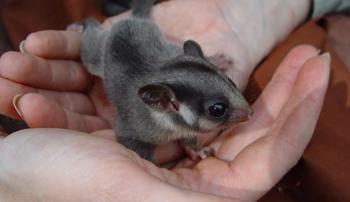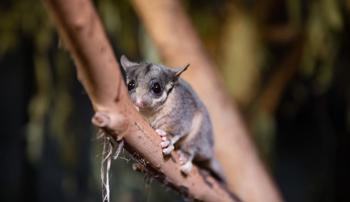Leadbeater's Possum (Lowland population)
Once thought to be extinct, the Leadbeater's Possum was rediscovered in 1961.
It is now the animal emblem of Victoria and is Critically Endangered. The Leadbeater’s Possum lives in forests close to Melbourne. They are small and speedy, sleeping in hollow trees during the day and feeding on insects and sweet nectar at night. Leadbeater’s Possums use their club-shaped tails to carry bark to build their nests.

The major threats
The loss of hollow-bearing trees is the possums' biggest threat. Hollows can take 150 years to develop in living trees, and old trees with suitable hollows have decreased due to logging and bushfires. The animal’s vulnerability to fire makes climate change a severe danger.

The plan for fighting extinction
Zoos Victoria is working to establish a conservation breeding population that can support reintroduction to the wild. Healesville Sanctuary currently holds a number of possums and is attempting to breed them. We are also working with our partners to restore habitat in the Yarra Valley and provide nest-boxes in the Central Highlands. More than one million trees and shrubs were planted between 2014-2018 in the Yarra Valley.
Partners
- Department of Energy, Environment and Climate Change
- Friends of the Leadbeater’s Possum
- Greening Australia
- Melbourne Water
- Parks Victoria
How you can help
- Wipe for Wildlife by using recycled toilet paper and protecting our native forests
- Join Friends of the Leadbeater’s Possum and volunteer.
- By visiting our zoos, you will be supporting our work to fight extinction.
- Donate if you can. As we are a not-for-profit organisation, all donations go towards our conservation efforts.
- Discover more about local conservation events and join the growing number of wild activists taking action for local wildlife.
Is your classroom learning about the Leadbeater's Possum?
Browse through our collection of animal teaching and learning resources for students. These include animal toolkits, e-books, Ask a Zoo Expert resources, video showcases and real-world examples to support the VCE Study Design.
